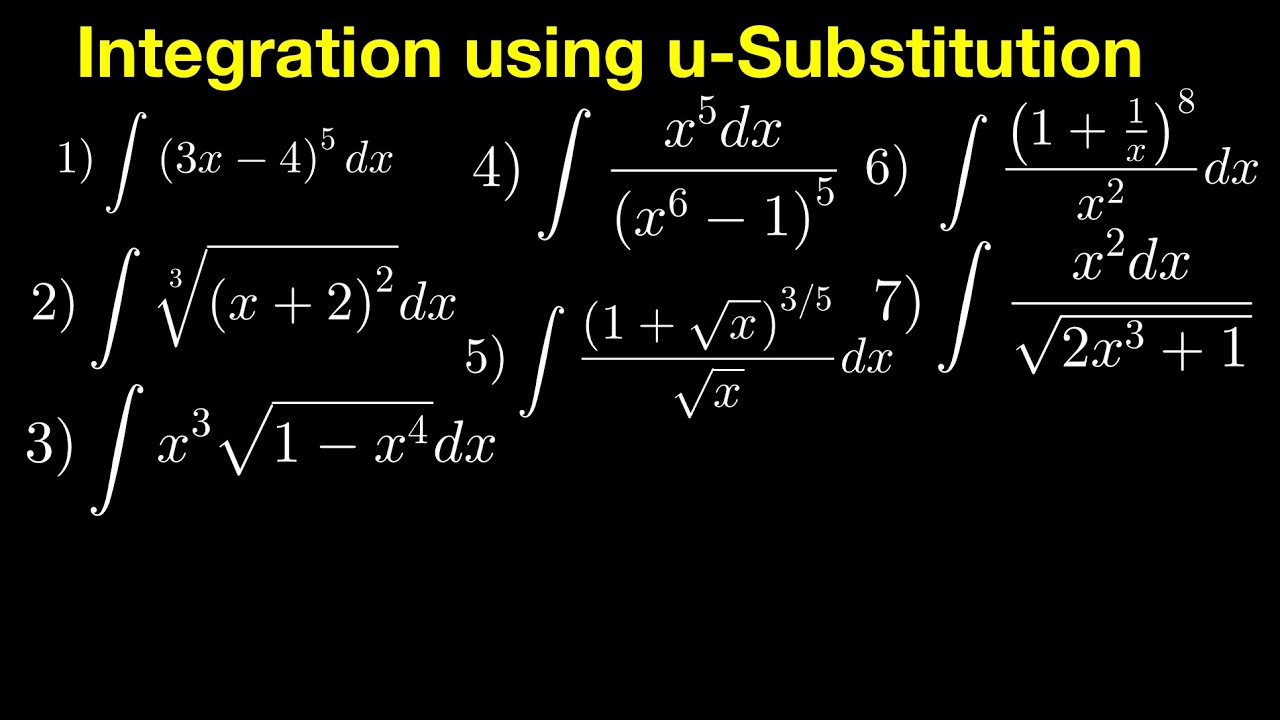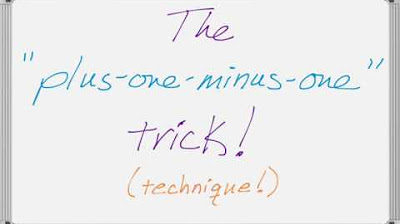Integration by Partial Fractions
TLDRThis video introduces the technique of integration by partial fractions, explaining when to use it and how to apply it. The instructor demonstrates the process using the integral of 4x + 41 over (x^2 + 3x - 10), factoring the denominator and decomposing the fraction into simpler forms to make integration straightforward. The method involves solving for coefficients by substituting strategic values of x, ultimately simplifying the integral into manageable parts.
Takeaways
- 📚 Integration by partial fractions is a specific skill used when the integral of a fraction cannot be simplified to U'/U.
- 🔍 If the integral is of the form U'/U, the result is the natural log of the absolute value of U plus a constant C.
- 🔑 The method is applicable when the denominator of the fraction is a quadratic that can be factored into distinct linear factors.
- 📉 The process involves decomposing the fraction into simpler fractions over each of the linear factors of the denominator.
- 📝 The decomposition is represented as A/(x-a) + B/(x-b), where a and b are the roots of the quadratic denominator.
- 🧩 To clear the fractions, multiply both sides by the least common denominator, which is the product of the linear factors.
- 🔍 Solving for A and B involves substituting values for x that simplify one of the terms to zero, allowing the other to be isolated.
- 🔢 For example, substituting x = -5 simplifies the term with B, allowing for the calculation of B's value.
- 📈 Similarly, substituting x = 2 simplifies the term with A, allowing for the calculation of A's value.
- 📊 Once A and B are determined, the original integral can be rewritten as two simpler integrals that can be solved using U'/U.
- 🎯 The final result is the sum of the natural logs of the absolute values of the simplified fractions, plus a constant C.
Q & A
What is the specific skill discussed in the video script?
-The specific skill discussed in the video script is integration by partial fractions.
When is integration by partial fractions typically used?
-Integration by partial fractions is typically used when dealing with an integral of a fraction that cannot be simplified to U Prime over U, and the denominator is a quadratic expression.
What is the result of the integral of U Prime over U?
-The result of the integral of U Prime over U is the natural log of the absolute value of U plus a constant C.
What is the first step in the partial fraction decomposition method?
-The first step in the partial fraction decomposition method is to factor the denominator of the fraction if it is a quadratic expression.
How does one determine the constants a and b in the partial fraction decomposition?
-One determines the constants a and b by substituting specific values for x that will cancel out one of the terms, allowing for the solution of the other constant.
What values of x are chosen to solve for a and b in the example given?
-In the example given, x is chosen to be -5 to solve for b, and x is chosen to be 2 to solve for a.
What is the purpose of multiplying both sides of the equation by the least common denominator during the partial fraction decomposition process?
-Multiplying both sides by the least common denominator is done to clear the fractions, allowing for the simplification of the equation and the determination of constants a and b.
How does the process of partial fraction decomposition simplify the original integral?
-The process of partial fraction decomposition simplifies the original integral by breaking it down into two separate, simpler integrals that can be easily solved using U Prime over U method.
What is the final result of the integral in the example provided?
-The final result of the integral in the example is 7 times the natural log of the absolute value of (x - 2) minus 3 times the natural log of the absolute value of (x + 5) plus a constant C.
What is the key takeaway from the video script for solving integrals using partial fractions?
-The key takeaway is to check for U Prime over U simplification first; if not possible and the denominator is a quadratic, factor it and use partial fraction decomposition to turn it into two easy integrals.
Outlines
📚 Introduction to Integration by Partial Fractions
This paragraph introduces the concept of integration by partial fractions, a technique used when the integral of a fraction cannot be directly simplified to U Prime over U. The speaker explains that this method is applicable when the denominator is a quadratic that can be factored into distinct linear factors. The process involves decomposing the fraction into simpler components, which can then be integrated more easily. The example given is the integral of 4x + 41 over the factored form of x^2 + 3x - 10, which is decomposed into (x - 2)(x + 5). The goal is to express the original fraction as a sum of simpler fractions, each with a single linear factor in the denominator.
🔍 Solving for Coefficients in Partial Fractions
In this paragraph, the speaker demonstrates how to solve for the coefficients 'a' and 'b' in the partial fraction decomposition. The method involves multiplying the entire equation by the least common denominator to clear the fractions and then substituting values of 'x' that simplify the equation to solve for each coefficient individually. The example continues with the integral from the previous paragraph, where the speaker sets 'x' to -5 to solve for 'b', finding it to be -3. Then, by setting 'x' to 2, the speaker solves for 'a', which is determined to be 7. The paragraph concludes with the restructured integral, now ready for easier integration, highlighting the effectiveness of partial fraction decomposition in simplifying complex integrals.
Mindmap
Keywords
💡Integration by Partial Fractions
💡U Prime over U
💡Quadratic Denominator
💡Factoring
💡Least Common Denominator (LCD)
💡Clearing Fractions
💡Coefficients A and B
💡Natural Logarithm
💡Antiderivatives
💡Constant of Integration (C)
Highlights
Introduction to the specific skill of integration by partial fractions.
When to use integration by partial fractions: with integrals of fractions that cannot be simplified to U Prime over U.
Explanation of the natural log result when the integral is U Prime over U.
Demonstration of when not to use U substitution with the given example of 4x + 41 over x^2 + 3x - 10.
The condition for using partial fractions: the denominator is a quadratic that can be factored into distinct linear factors.
The process of decomposing a fraction into partial fractions by setting up the equation.
Clearing the fractions by multiplying through by the least common denominator.
Solving for the coefficients a and b by substituting strategic values for x.
Determining the value of b by setting x to -5 and simplifying the equation.
Calculating the value of a by setting x to 2 and solving the resulting equation.
Transformation of the original integral into simpler integrals using the values of a and b.
Integration of the simplified fractions using U substitution.
Final expression of the integral result with the constants a and b determined.
Summary of the method for partial fraction decomposition and its application.
The importance of turning complex integrals into simpler forms for easier computation.
Conclusion and anticipation of the next session.
Transcripts
Browse More Related Video

Integration Using u-Substitution

Integration Technique - The Plus 1, Minus 1 Trick

Lesson 15 - Integration By Parts (Calculus 1 Tutor)

Integration with partial fractions | AP Calculus BC | Khan Academy

7.3.6 Partial Fraction Decomposition

Integrating sin^n(x) Using Reduction | MIT 18.01SC Single Variable Calculus, Fall 2010
5.0 / 5 (0 votes)
Thanks for rating: